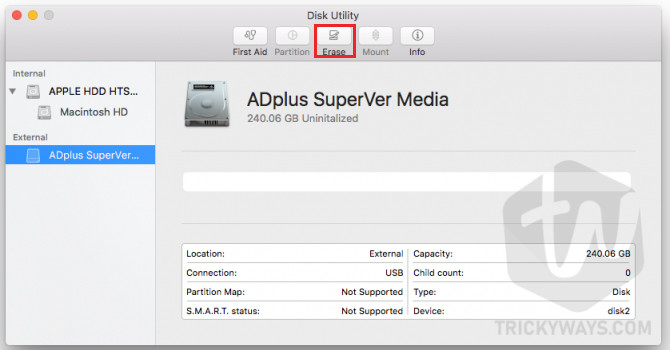

- WHAT USB FORMAT FOR MAC AND PC HOW TO
- WHAT USB FORMAT FOR MAC AND PC PC
- WHAT USB FORMAT FOR MAC AND PC WINDOWS
However, remember that once you recognize the data loss issue, make sure you don’t tweak your files in the meantime to avoid overwriting. Fortunately, there’s also a remedy for this, and that is by using data recovery software. Now if you already did the formatting without a backup, there’s a chance you won’t be able to see your files ever again.
WHAT USB FORMAT FOR MAC AND PC HOW TO
Either way, you won’t go very far if you don’t know how to back up your files. You can either create a duplicate of your files and transfer them to another storage device, or create a backup using Mac’s Time Machine feature. This would mean that you will have to create a backup of your files, one way or another. First of all, you have to know that all files will be deleted once formatting is done. Since formatting will most likely affect your whole USB drive, it’s important to know about the warnings that you will have to be cautious of. Now that that’s settled, it might be time to discuss the remedy to your problem and learn How to Format USB to FAT32 on Mac. This would mean that you won’t be able to use it on files larger than that. The most significant limitation of the great FAT32 format is that you can only store files that are 4GB in size or smaller. The convenient FAT32 format is no exception. However, just as something possesses advantages, there are also disadvantages. In addition to operating systems, most devices such as cameras, speakers, and even video game players such as PlayStation and Xbox, supports FAT32, as long as they have a USB port. This is helpful for users that own computers of both OS.
WHAT USB FORMAT FOR MAC AND PC WINDOWS
Regardless of your operating system, be it Windows or Mac, you can read and write a FAT32 drive. However, besides the fact that USB drives are incompatible, there are also other reasons why you need to learn this skill.įor one, the FAT32 format offers a lot of benefits to Mac users: That’s perhaps why you want to learn How to Format USB to FAT32 on Mac. Unfortunately, such drives don’t work by default on Mac.

Most of the removable drives out on the market are USB drives. Why Learn How to Format USB to FAT32 on Mac? The Method on How to Format USB to FAT32 on Mac Final Words Part 1. Things to Remember Before Formatting USB Part 3. Why Learn How to Format USB to FAT32 on Mac? Part 2. Tip: In addition to how to convert the USB format to FAT32 in this article, there is also a similar article about how to format an SD card to FAT32 on Mac. Additionally, the Mac operating system doesn’t format incompatible drives automatically, so you’ll have to learn how to do it manually.īut before that, what other reasons do you have for learning How to Format USB to FAT32 on Mac? Since you won’t be able to use your USB drive unless you do this, this skill is crucial for people who often use USB drives.

This is where learning How to Format USB to FAT32 on Mac comes in. Fortunately, there’s a format that can be used in lots of operating systems, and that is the FAT32. Sometimes, the format is incompatible on your Mac.

You’ll now be able to save large files with no problem.Not all USB drives can be immediately used once you take them out of the package.
WHAT USB FORMAT FOR MAC AND PC PC
Insert the USB stick into your PC or Mac.Note that in the instructions below I recommend using the exFAT file-system as this is the most widely supported file-system that supports large files at this time (NTFS isn’t as widely supported): Before following the instructions below be aware that your existing files on the USB drive will likely be erased during the formatting. The trick to storing large files on a flash-drive is to format the drive using a file-system that accepts large files. How to store files larger than 4GB on a USB Drive The problem with older FAT versions however is that the maximum single file-size is 4GB or lower (depending on the version of FAT used). The reason that USB flash-drives are typically formatted using one of these FAT file-systems is that the format is widely supported and robust (PC, Mac and Linux all support FAT). There are numerous variants of the FAT file-systems from the past including FAT, FAT12, FAT16, FAT16B and FAT32. Usually, flash drives are pre-formatted using an older FAT file-system version. Why the too large for the destination file system error occurs Fortunately it’s a really simple issue to resolve. If trying to save a large file to a USB memory stick a message like the file ‘example.zip’ is too large for the destination file system will show. over 4GB in size), it isn’t, by default, possible to save these large files.


 0 kommentar(er)
0 kommentar(er)
